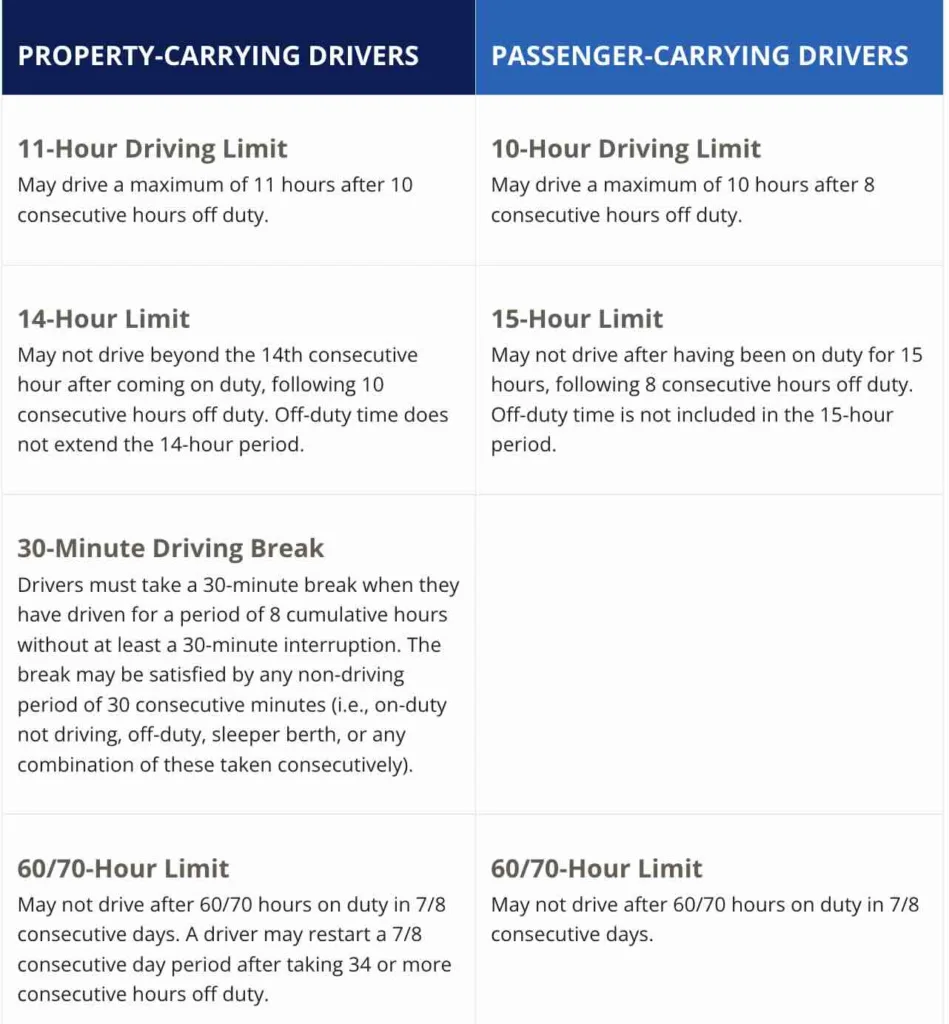
Adhering to regulations is crucial for safety and compliance in the trucking industry. Among these regulations, the 34-hour reset rule is useful for managing driving hours and ensuring that truck drivers are well-rested. Houston truck accident attorney Greg Baumgartner will cover the 34-hour reset rule.
What is the 34-Hour Reset Rule?
The 34-hour reset rule, part of the Hours of Service (HOS) regulations established by the Federal Motor Carrier Safety Administration (FMCSA), allows truck drivers to reset their weekly driving limits by taking at least 34 consecutive hours off duty. This rule is designed to provide drivers with a sufficient rest period, reducing fatigue and enhancing road safety.

Key Provisions of the 34-Hour Reset Rule
Minimum Rest Period
Drivers must take at least 34 consecutive hours off duty. This period can include sleep, personal time, or other non-work-related activities.
Weekly Reset
The reset allows drivers to start a new workweek with a fresh set of hours, resetting their 60/70-hour limit over 7/8 consecutive days.
Nighttime Requirement
The 34-hour reset must include two periods from 1 a.m. to 5 a.m. to ensure that drivers get restorative sleep.
Importance of the 34-Hour Reset Rule For Truck Drivers
The 34-hour reset rule is vital for several reasons:
Enhancing Driver Safety – By mandating a substantial rest period, the rule helps mitigate driver fatigue, a leading cause of accidents.
Promoting Health and Well-being- Adequate rest is crucial for maintaining drivers’ physical and mental health, contributing to overall well-being.
Compliance and Avoiding Penalties- Adhering to the rule helps trucking companies avoid hefty fines and penalties associated with HOS violations.
Practical Applications and Scenarios
Let’s explore some practical applications of the 34-hour reset rule in real-world scenarios:
Scenario 1: Long-Haul Trucking
A long-haul truck driver who reached their 70-hour limit within eight days can utilize the 34-hour reset rule to start a new workweek. By taking 34 consecutive hours off, including two periods from 1 a.m. to 5 a.m., the driver can ensure they are well-rested and compliant with FMCSA regulations before hitting the road again.
Scenario 2: Regional Trucking
For regional drivers who operate within a 150-mile radius, the 34-hour reset rule provides flexibility in managing their weekly driving hours. These drivers can plan their rest periods to coincide with weekends or personal time, effectively resetting their weekly limits while maintaining a healthy work-life balance.
Compliance Strategies for Employers
Employers play a critical role in ensuring compliance with the 34-hour reset rule. Here are some strategies to help employers manage their drivers’ schedules effectively:
Implementing Electronic Logging Devices (ELDs)
ELDs help track drivers’ hours accurately, ensuring compliance with HOS regulations. Employers can use ELD data to monitor and plan rest periods. ELDs ease the burden of compliance with the regulations for both employers and truck drivers
Regular Training and Education
Providing ongoing training for drivers about HOS regulations and the importance of the 34-hour reset rule can enhance compliance and safety.
Flexible Scheduling
Motor Carriers should create flexible schedules that accommodate the 34-hour reset rule, allowing drivers to rest without compromising delivery timelines.
Challenges and Solutions
The 34-hour reset rule can present challenges for drivers and employers despite its benefits. Here are some common challenges and practical solutions:
Balancing Rest Periods with Delivery Deadlines
Employers can utilize advanced route planning and scheduling software to optimize delivery schedules while ensuring compliance with the 34-hour reset rule. This approach minimizes disruptions and maintains efficient operations.
Managing Irregular Sleep Patterns
Encouraging drivers to maintain consistent sleep schedules, even during off-duty periods, can help regulate their sleep patterns. Employers can also provide resources on sleep hygiene and fatigue management.
Adapting to Changes in Regulations
Staying informed about updates to HOS regulations and incorporating them into training programs ensures that drivers and employers remain compliant. Subscribing to industry newsletters and participating in FMCSA webinars can provide valuable insights.
Understanding and adhering to the Hours-of-Service Regulations, including the 34-hour reset rule, is crucial for ensuring the safety and well-being of truck drivers, as well as maintaining compliance with FMCSA regulations. By implementing effective strategies and fostering a safety culture, employers can navigate the complexities of the rule while optimizing their operations.
The 34-hour reset rule remains a cornerstone of responsible and sustainable driving practices as we prioritize safety and compliance in the trucking industry.
Contact a Houston Truck Accident Attorney for Help with a Trucking Accident Injury Claim
Baumgartner Law Firm has represented personal injury victims since 1985 and has numerous multimillion-dollar results for truck accident victims. We offer a free consultation – call us at (281) 587-1111.
Related Resources:
Truck Drivers’ Logbooks in Truck Accident Lawsuits
